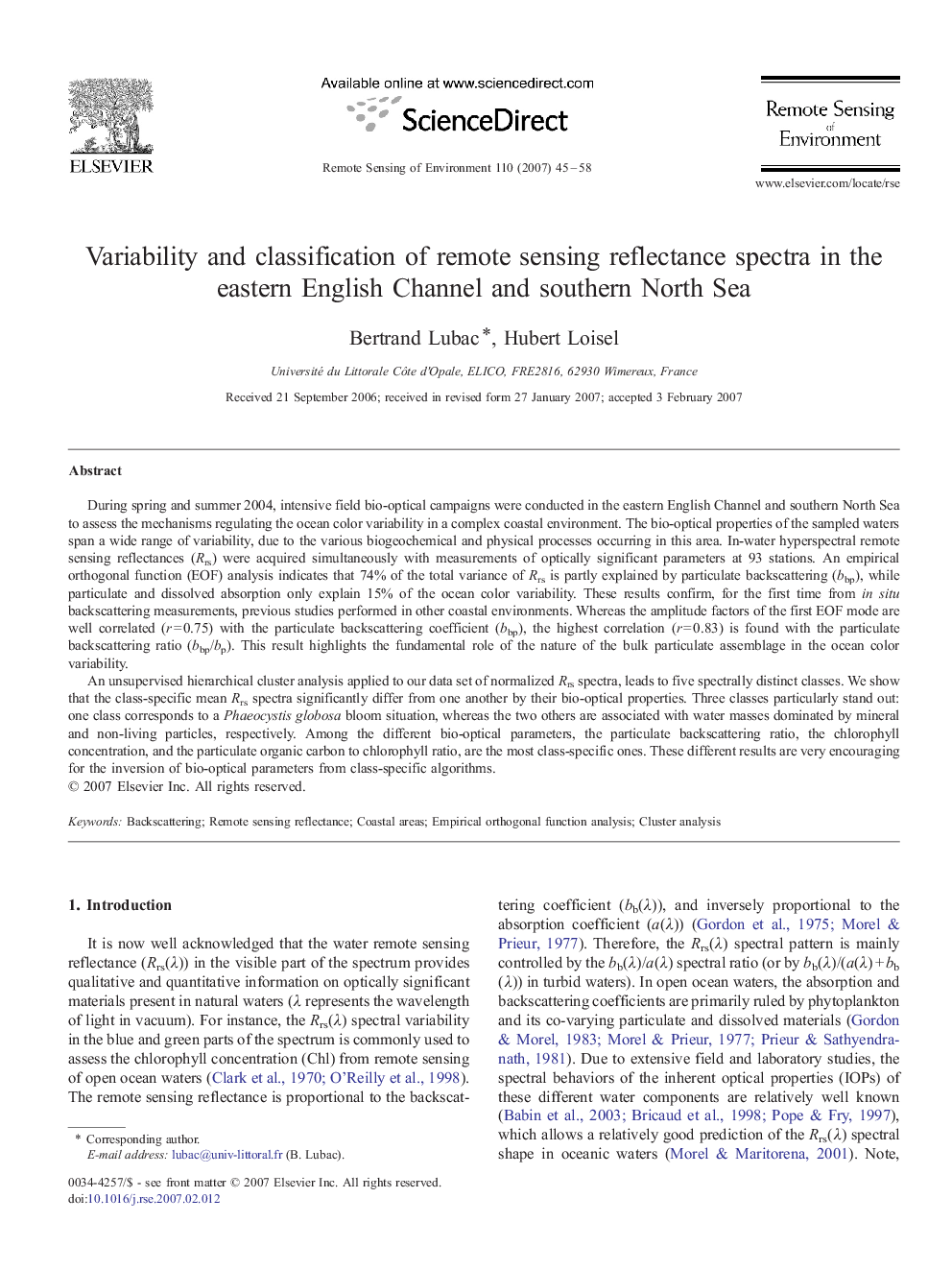| کد مقاله | کد نشریه | سال انتشار | مقاله انگلیسی | نسخه تمام متن |
|---|---|---|---|---|
| 4460751 | 1621340 | 2007 | 14 صفحه PDF | دانلود رایگان |

During spring and summer 2004, intensive field bio-optical campaigns were conducted in the eastern English Channel and southern North Sea to assess the mechanisms regulating the ocean color variability in a complex coastal environment. The bio-optical properties of the sampled waters span a wide range of variability, due to the various biogeochemical and physical processes occurring in this area. In-water hyperspectral remote sensing reflectances (Rrs) were acquired simultaneously with measurements of optically significant parameters at 93 stations. An empirical orthogonal function (EOF) analysis indicates that 74% of the total variance of Rrs is partly explained by particulate backscattering (bbp), while particulate and dissolved absorption only explain 15% of the ocean color variability. These results confirm, for the first time from in situ backscattering measurements, previous studies performed in other coastal environments. Whereas the amplitude factors of the first EOF mode are well correlated (r = 0.75) with the particulate backscattering coefficient (bbp), the highest correlation (r = 0.83) is found with the particulate backscattering ratio (bbp/bp). This result highlights the fundamental role of the nature of the bulk particulate assemblage in the ocean color variability.An unsupervised hierarchical cluster analysis applied to our data set of normalized Rrs spectra, leads to five spectrally distinct classes. We show that the class-specific mean Rrs spectra significantly differ from one another by their bio-optical properties. Three classes particularly stand out: one class corresponds to a Phaeocystis globosa bloom situation, whereas the two others are associated with water masses dominated by mineral and non-living particles, respectively. Among the different bio-optical parameters, the particulate backscattering ratio, the chlorophyll concentration, and the particulate organic carbon to chlorophyll ratio, are the most class-specific ones. These different results are very encouraging for the inversion of bio-optical parameters from class-specific algorithms.
Journal: Remote Sensing of Environment - Volume 110, Issue 1, 14 September 2007, Pages 45–58